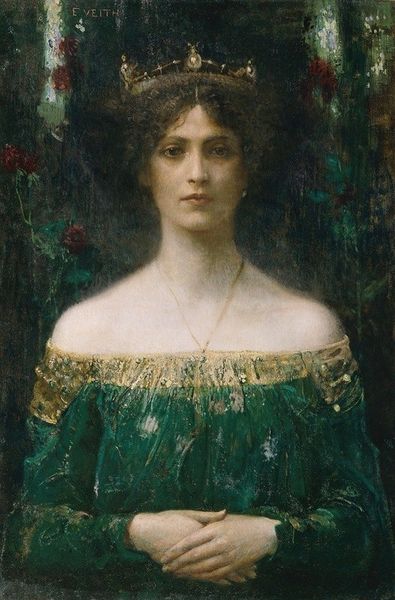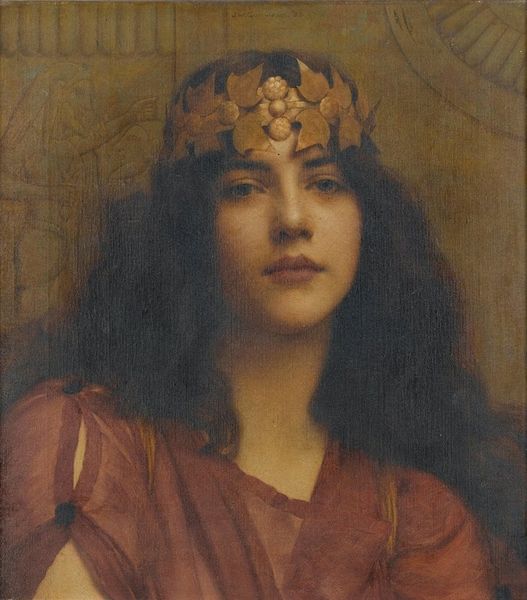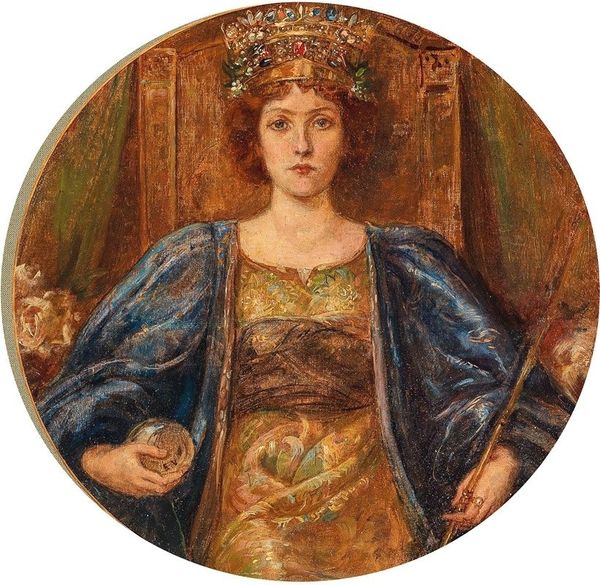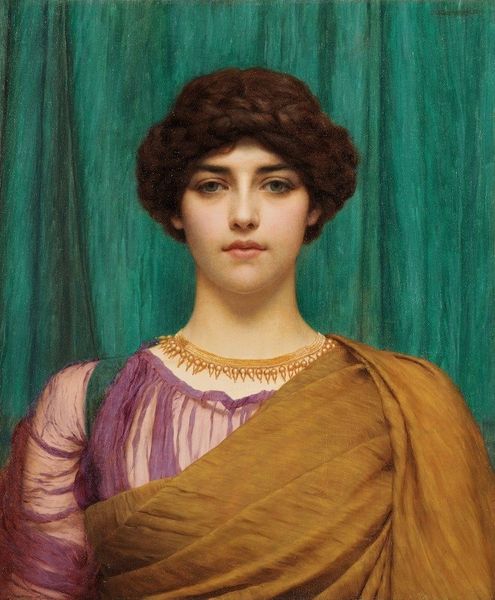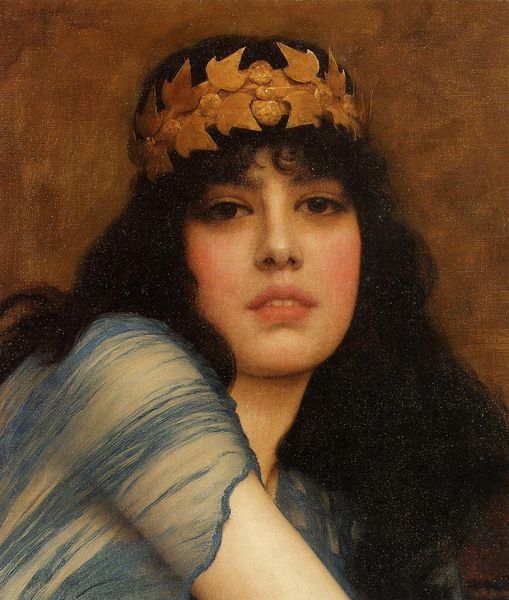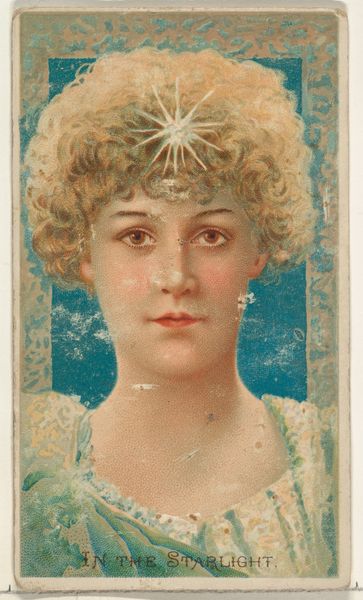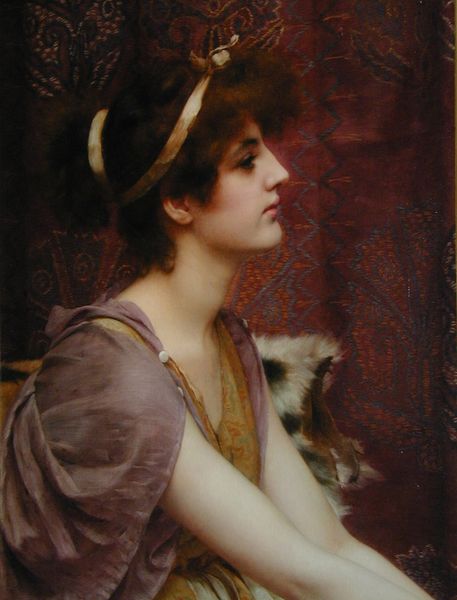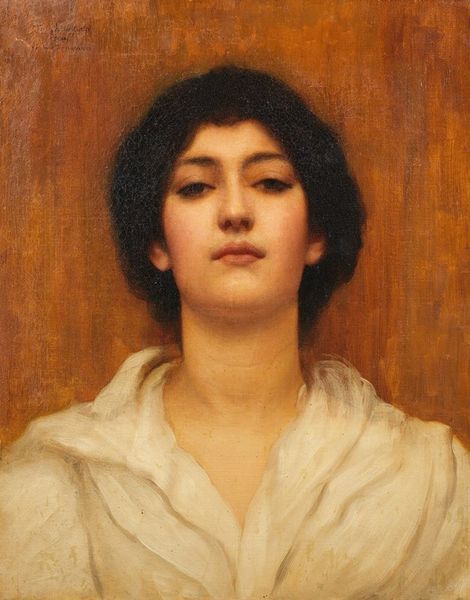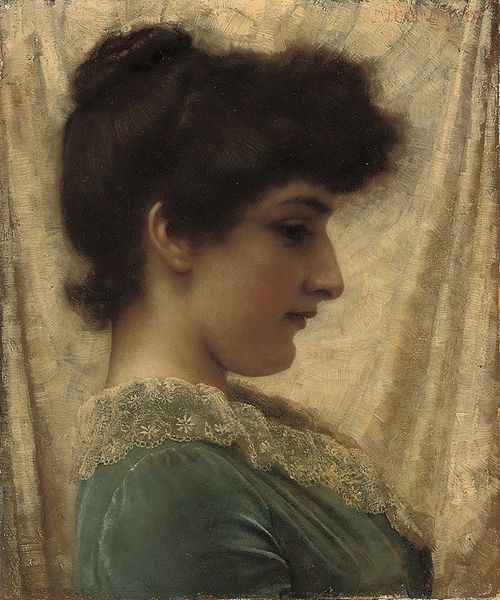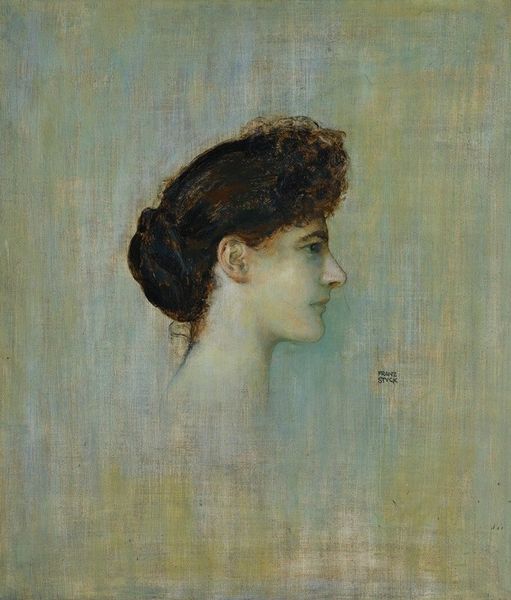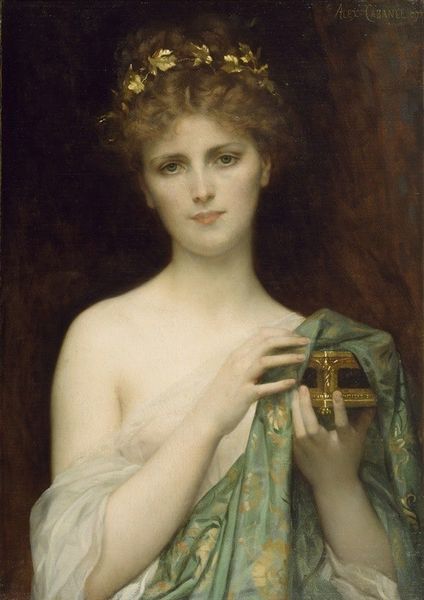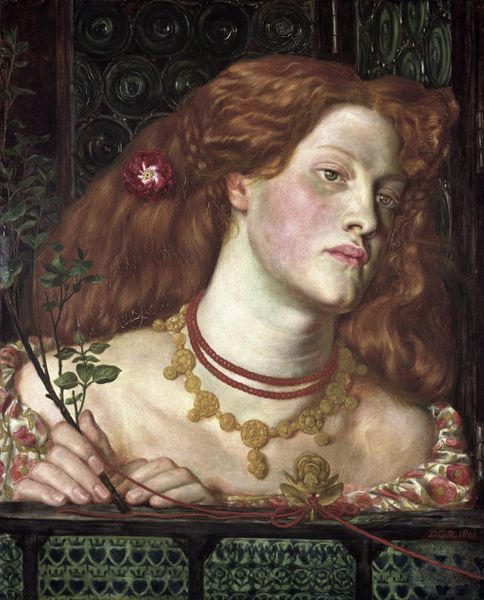
painting, oil-paint
#
portrait
#
figurative
#
art-nouveau
#
painting
#
oil-paint
#
figuration
#
oil painting
#
symbolism
#
portrait art
#
realism
Copyright: Public Domain: Artvee
Editor: This portrait, entitled "Cleopatra" by Władysław Czachórski, is captivating. It seems to be painted in oils, with such rich detailing in the jewelry. What do you see when you look at it? Curator: The opulence is unavoidable. The gold leaf, the specific stones in the crown and necklace… each of these signals a vast network of trade, extraction, and exploitation. Consider the labour involved, not only in the mining and crafting of these materials, but also in the acquisition and ownership, and the ultimate purpose of display and admiration, and how it contrasts with what’s depicted versus who the artwork may be FOR. How do you read her gaze, given that material context? Editor: That’s a compelling point! Her gaze does seem to hold a certain weariness, almost a defiance, when viewed alongside that elaborate display of wealth. Curator: Exactly. Think about what these materials *meant* at the time. Were these stones valued for their beauty alone, or did they hold symbolic significance, reflecting specific cultural beliefs or colonial aspirations of power? Even the choice of oil paint contributes – its richness, its capacity to mimic the textures of fabric and skin… These choices were never neutral, were they? Editor: Definitely. I hadn’t thought about the materials in that way, connecting the subject to the source in that specific sense. Curator: Now consider how Czachórski, as an artist, navigates the prevailing trends of Realism and Art Nouveau within the rigid systems of the art world. Was this painting a display of skill intended to elevate himself and thus also the art? Editor: I see what you mean, it makes me wonder if he used specific pigments because of where they came from. I'm seeing much more about this Cleopatra through these points!
Comments
No comments
Be the first to comment and join the conversation on the ultimate creative platform.
